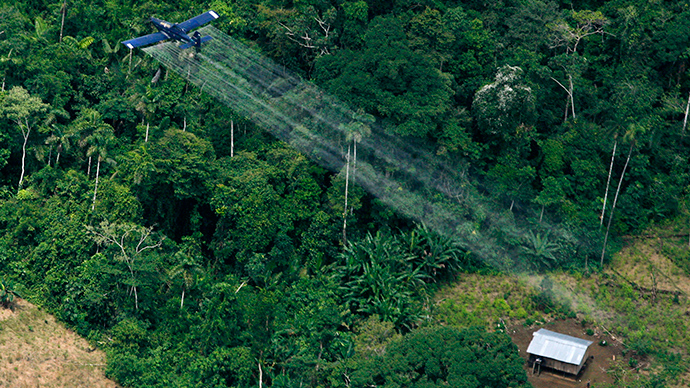WHO labels 2,4-D herbicide as ‘possibly’ causing cancer

The WHO cancer research unit has deemed 2,4-D, the active ingredient of Dow’s herbicide – once used in infamous Agent Orange – as ‘possibly’ causing cancer. The chemical ranked one behind the ‘probably carcinogenic’ glyphosate in Monsanto's Roundup.
Upon careful review of scientific data regarding 2,4-D, a chemical used for a Dow AgroSciences product, WHO’s International Agency for Research on Cancer (IARC) unit has determined that the weed killer be classified as “possibly carcinogenic to humans.”
READ MORE: WHO cancer division to rule on widespread herbicide’s carcinogenic hazard
The verdict, produced by a team of 24 scientists, including he Dow scientific lobby, came after a week-long scientific findings review that took place on June 2-9, which met in Lyon, France.
IARC said that the “possibly carcinogenic” classification was assigned because of “inadequate evidence in humans and limited evidence in experimental animals” of links between 2,4-D and cancer.
Studies over the years pointed to evidence showing cancer connections with 2,4-D, especially in non-Hodgkin lymphoma (NHL). However IARC said, “epidemiological studies did not find strong or consistent increases in risk of NHL or other cancers in relation to 2,4-D exposure.”
WHO said that epidemiological studies provided “strong evidence that 2,4-D induces oxidative stress ... and moderate evidence that 2,4-D causes immunosuppression.”
Breaking! 2,4 D deemed a "possible" carcinogen! #endglyphosate@new_resistancepic.twitter.com/tsuxvMwPN0
— A New Resistance (@new_resistance) June 23, 2015
Since its inception in 1945, 2,4-D has been widely used to control weeds in urban and residential settings. The chemical also makes up half of the toxic mix in Agent Orange, once used by the United States during the Vietnam War, which is thought to have resulted in the deaths of an estimated 400,000 and birth defects in 500,000 people.
Dow AgroSciences, a unit of Dow Chemical Co, rejected the findings of the IARC review, claiming the new classification is “inconsistent with government findings in nearly 100 countries.”
READ MORE: Too ‘dramatic’: Monsanto shuns WHO verdict that Roundup ‘probably’ causes cancer
Dow says WHO finding are based on “incomplete” information that has focused on “whether a substance or activity could be a carcinogen, not whether it is a carcinogen when used under real-world circumstances.”
“IARC has classified only one of about 1,000 agents and activities it has reviewed as ‘probably not carcinogenic to humans,” said John Cuffe, from Dow’s Global Regulatory Sciences and Regulatory Affairs. “IARC has classified products we use as potential carcinogens, including coffee, aloe vera, and pickled vegetables.”
The move by IARC to brand 2,4-D as possibly carcinogenic comes shortly after the agency classified glyphosate or Roundup herbicide, produced by Monsanto, as “probably” carcinogenic.












